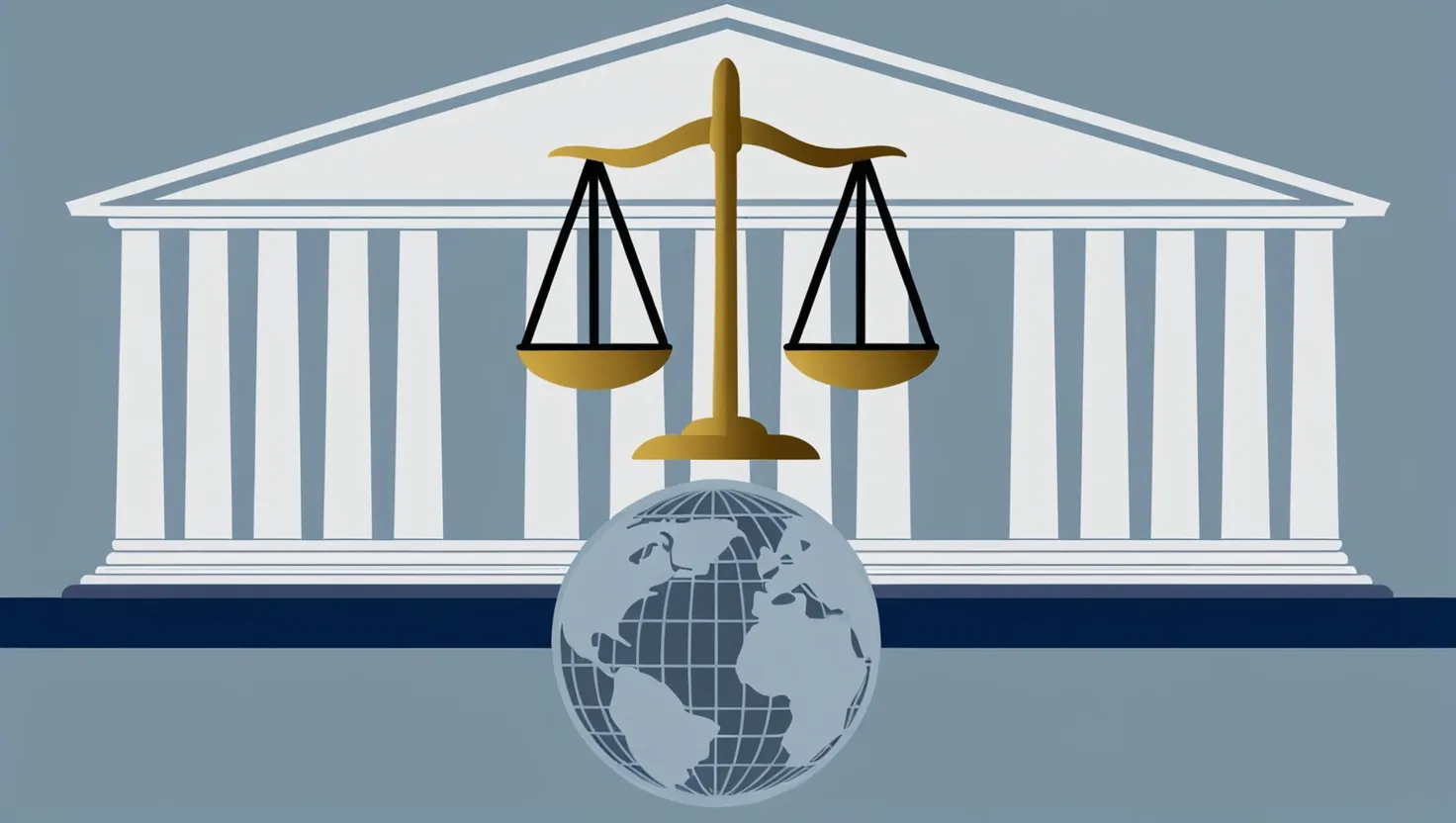Sovereign defaults have long been a source of economic turmoil, sending shockwaves through financial markets and leaving lasting scars on nations and their people. As we examine five notable default episodes from recent decades, we’ll uncover the complex web of causes and consequences that surround these crises.
Let’s begin our journey in Argentina at the turn of the millennium. The year was 2001, and the South American nation was about to plunge into economic chaos. After years of maintaining a fixed exchange rate pegged to the US dollar, Argentina’s economy had become increasingly uncompetitive. When Brazil, its main trading partner, devalued its currency in 1999, Argentina found itself in an impossible situation.
As confidence eroded, Argentines rushed to withdraw their savings, fearing a devaluation or bank freeze. The government’s response? Implementing strict capital controls known as the “corralito,” limiting cash withdrawals to just 250 pesos per week. Imagine the panic and frustration of suddenly being cut off from your own money.
On December 26, 2001, Argentina defaulted on $93 billion in debt - at the time, the largest sovereign default in history. The peso’s value plummeted, unemployment soared past 20%, and nearly half the population fell below the poverty line. The scenes of protest and social unrest that followed are seared into the nation’s collective memory.
But what were the broader implications? Argentina’s default sent tremors through emerging markets, raising borrowing costs and spooking investors. It also strained relations with the IMF and other creditors for years to come. Perhaps most significantly, it challenged long-held assumptions about the inviolability of currency pegs and the wisdom of IMF-prescribed austerity measures.
“The Argentine crisis should serve as a wake-up call for the international financial community,” declared Nobel laureate Joseph Stiglitz in the aftermath. “We need to rethink our approach to sovereign debt and crisis management.”
Indeed, the Argentine default would cast a long shadow over discussions of debt sustainability and crisis prevention in the years that followed. But it was far from the last major sovereign debt crisis the world would face.
Fast forward to 2015, and we find ourselves in Greece - a nation on the brink. After years of unsustainable borrowing and fiscal mismanagement, compounded by the global financial crisis, Greece was struggling to meet its debt obligations. Despite two earlier bailouts, the country found itself unable to make a crucial 1.6 billion euro payment to the IMF in June 2015.
The ensuing crisis threatened not just Greece’s economy, but the stability of the entire eurozone. As negotiations with creditors broke down, Greece imposed capital controls and closed its banks for three weeks. The specter of “Grexit” - Greece leaving the euro - loomed large.
What made the Greek crisis particularly thorny was its entanglement with broader European politics and institutions. How could a monetary union function when its members had such divergent economic realities? What compromises were necessary to preserve European unity?
Former Greek Finance Minister Yanis Varoufakis offered a stark assessment: “The euro is a flawed construction. It’s like building a fine riverboat and then forgetting to put an engine in it.”
Ultimately, Greece reached a deal for a third bailout, averting an exit from the euro but committing to years of painful austerity measures. The crisis exposed deep fissures within the eurozone and raised existential questions about its future.
But not all sovereign defaults are created equal. Let’s rewind to 1998 and shift our gaze to Russia. In August of that year, Russia shocked global markets by devaluing the ruble, defaulting on domestic debt, and declaring a moratorium on payments to foreign creditors.
The fallout was swift and severe. The ruble lost two-thirds of its value in just three weeks. Russian stocks plummeted 75%. But the impact wasn’t confined to Russia’s borders - it triggered a “flight to quality” that roiled markets worldwide.
Most infamously, the Russian default led to the collapse of Long-Term Capital Management, a massive hedge fund whose implosion threatened to destabilize the entire U.S. financial system. The Federal Reserve had to orchestrate a bailout to prevent wider contagion.
The Russian default of 1998 serves as a stark reminder of how interconnected global financial markets have become. A crisis in one corner of the world can quickly metastasize, threatening stability far beyond its origins. It also highlighted the dangers of excessive leverage and the limitations of sophisticated financial models in predicting real-world events.
As we continue our tour of sovereign debt crises, we arrive at a more recent and ongoing saga: Venezuela’s debt crisis. Once South America’s wealthiest nation, Venezuela has been mired in economic collapse for years, fueled by political instability, corruption, and mismanagement of its vast oil resources.
In 2017, Venezuela began missing payments on its sovereign bonds, eventually accumulating billions in unpaid debt. Unlike some other defaults we’ve examined, Venezuela’s crisis has unfolded in slow motion, with the government employing various tactics to avoid a formal declaration of default.
The impact on Venezuela’s people has been devastating. Hyperinflation has rendered the currency virtually worthless. Shortages of food and medicine are widespread. Millions have fled the country in what’s been called one of the worst refugee crises in recent history.
But Venezuela’s crisis has broader implications as well. As a major oil producer, its economic collapse has had ripple effects on global energy markets. The crisis has also become a geopolitical flashpoint, with countries like Russia and China providing economic lifelines to the Maduro regime while Western nations push for political change.
What lessons can we draw from Venezuela’s ongoing ordeal? Perhaps most critically, it underscores the dangers of resource dependence and the importance of economic diversification. It also raises thorny questions about the intersection of sovereign debt, human rights, and international law.
“The tragedy of Venezuela is a cautionary tale of how quickly a country can unravel when institutions fail and rule of law is abandoned,” notes Harvard economist Ricardo Hausmann.
Our final stop brings us to Lebanon in 2020. In March of that year, Lebanon announced it would default on a $1.2 billion Eurobond, marking the first sovereign default in the country’s history. This came amid a perfect storm of crises - political deadlock, a collapsing currency, a banking system on the brink, and the global COVID-19 pandemic.
Lebanon’s default sent shockwaves through the Middle East’s financial sector, where Lebanese banks had long been seen as a pillar of stability. It also exposed the fragility of Lebanon’s sectarian power-sharing system and the deep-rooted corruption that had hollowed out the economy.
The aftermath has been grim. Lebanon’s currency has lost over 90% of its value. Poverty rates have soared. The devastating Beirut port explosion in August 2020 only compounded the country’s woes.
Yet Lebanon’s crisis also offers insights into the changing nature of sovereign debt negotiations. Unlike in previous eras, China has emerged as a major creditor, complicating traditional restructuring processes. The crisis has also highlighted the growing role of domestic debt in emerging market finances.
As we reflect on these five sovereign default episodes, what broader lessons can we draw? How have they shaped our understanding of debt sustainability, crisis management, and global financial stability?
First, these crises underscore the complex interplay between economic fundamentals, political institutions, and global market sentiment. No two defaults are exactly alike, and cookie-cutter solutions rarely suffice.
Second, they highlight the importance of early intervention and proactive debt management. Too often, countries delay necessary reforms until crisis is imminent, limiting their options and exacerbating the eventual fallout.
Third, these episodes reveal the limitations of existing international financial architecture in preventing and resolving sovereign debt crises. From the IMF’s role to the lack of a formal sovereign bankruptcy mechanism, there’s still much work to be done in creating a more robust global financial system.
Finally, these crises remind us of the human cost of sovereign defaults. Behind the financial jargon and market movements are real people whose lives are upended by economic collapse. As we analyze these events, we must never lose sight of their profound social and human implications.
As emerging market debt levels reach new highs and global economic uncertainty persists, the lessons of past sovereign defaults take on renewed urgency. Will we heed these lessons and build more resilient financial systems? Or are we doomed to repeat the mistakes of the past?
The answer, as always, lies in our collective hands. By studying these crises, fostering international cooperation, and prioritizing long-term sustainability over short-term gains, we can work towards a more stable and equitable global financial order.
What do you think? How can we better prevent and manage sovereign debt crises in the future? What role should international institutions play? And how can we ensure that the voices of ordinary citizens are heard in these high-stakes financial decisions?
As we grapple with these questions, one thing is certain: the story of sovereign debt and default is far from over. It will continue to shape our economic landscape for years to come, challenging our assumptions and pushing us to find new solutions to age-old problems.






